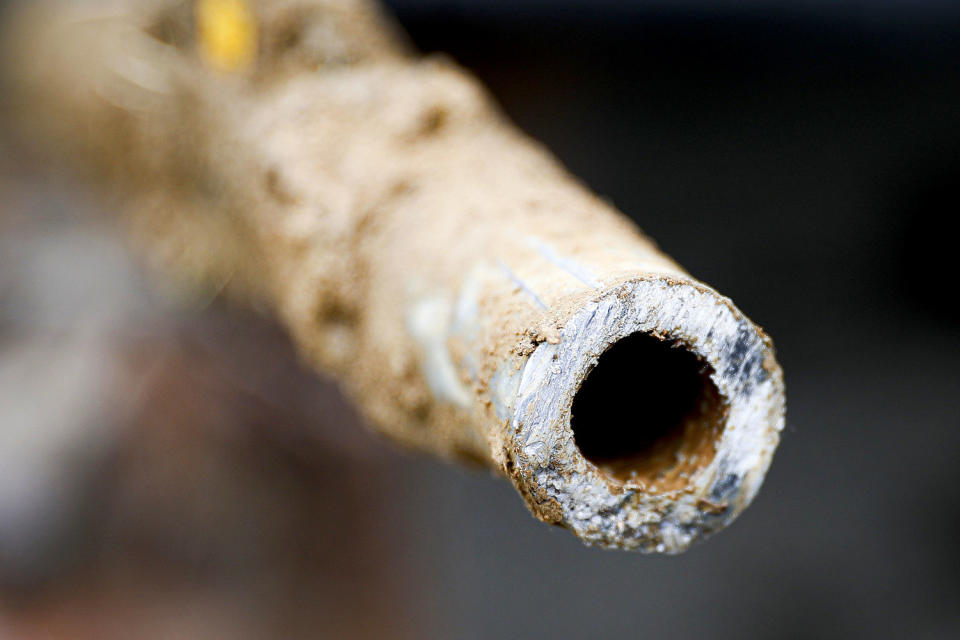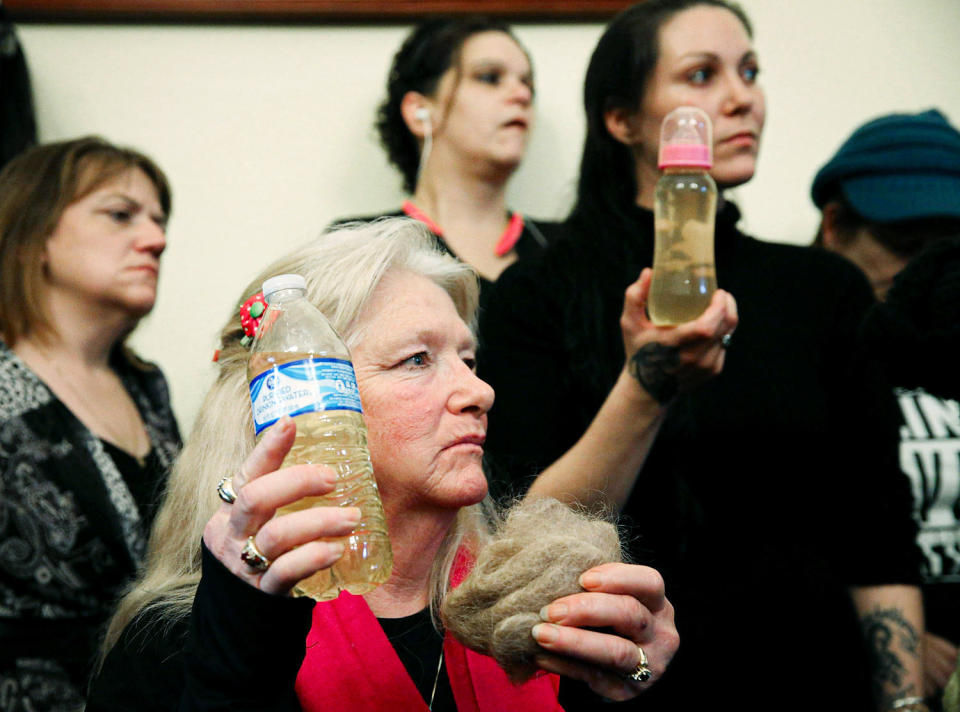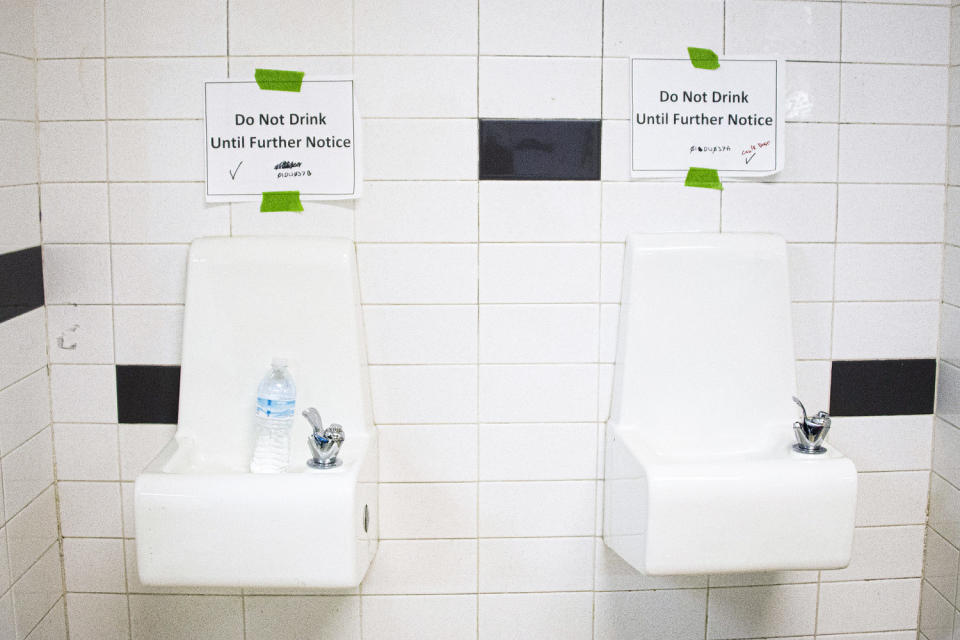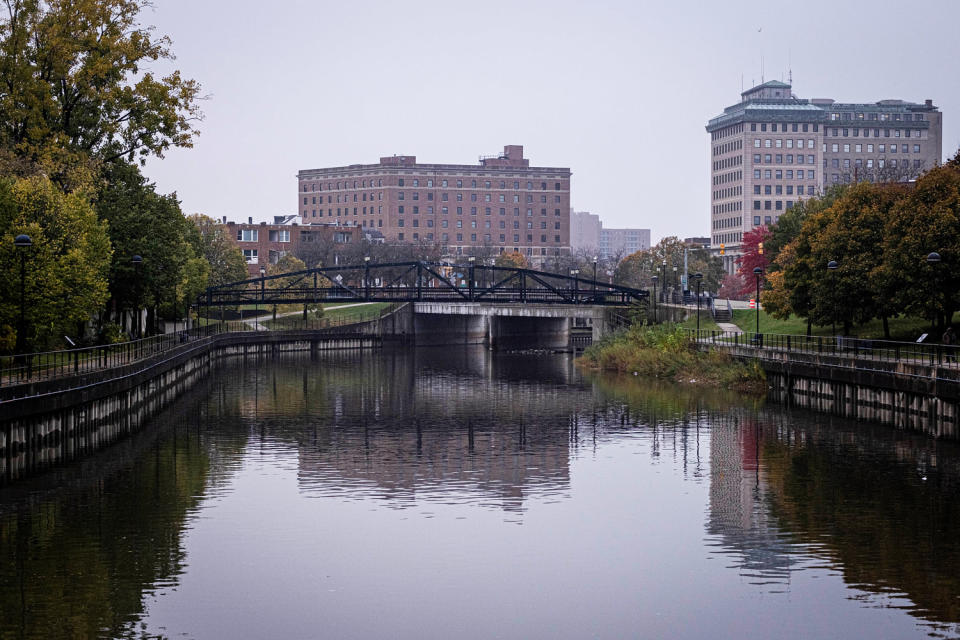10 years after Flint's lead water crisis was discovered, a lack of urgency stalls "proper justice"
FLINT, Mich. — Ten years ago, smiling politicians posed for cameras while pushing a button, swapping the main tap water source for this majority-Black, impoverished city to the Flint River — the untreated water that started flowing from residents’ taps would become contaminated when it corroded the pipes.
For years afterward, the city’s water was tainted with lead, a human-made crisis that became emblematic of how poorer communities of color in the United States could fall victim to government mismanagement.
In that time, Michigan started and then stopped providing free bottled water to Flint residents; criminal charges were brought and then dismissed against several officials for deaths suspected of being linked to the scandal; and a lawsuit was settled with the state in 2021 for $626 million, but residents have yet to receive a dime.
Now, Mayor Sheldon Neeley contends the city’s work to ensure a Flint free from contaminated drinking water is finally on the “last leg” of the process — a promise that comes as families continue to live with lingering adverse health effects and demand ongoing accountability.

“We have new infrastructure. We have new state-of-the-art technologies,” he said.“Residents of this community never again have to worry about drinking from the Flint River water,” Neeley added.
Since the crisis unfolded, almost 30,000 homes and businesses have had their water service lines investigated and replaced, he said. Efforts will resume this week to inspect the lines at almost three dozen more structures, although about 1,900 others have not been reviewed.
A federal judge last month held Flint in contempt of court for missing deadlines related to replacing service lines, writing that “the city has failed to abide by the court’s orders in several respects” and adding that “it has no good reason for its failures.” Meanwhile groups, including the Natural Resources Defense Council, accuse the city of dragging its feet.

Neeley said the city has been unable to move forward on those outstanding properties because their owners have not granted access. But activists claim it’s the city that isn’t making the effort to contact them.“As a resident myself, I’m making sure that we do the things necessary to reach out,” said Neeley, who was elected mayor in 2019 and re-elected in 2022. “Those individuals that said they never received a knock at the door, they can also make an outreach to the city of Flint.”
“We’re working every day,” he added, “and everything doesn’t happen overnight.”
But a decade should be more than enough time, Flint residents argue.
“It’s been the residents, the poisoned people, on the front lines this entire fight,” said Melissa Mays, a social worker and activist. “It’s been exhausting because it’s ongoing.”
‘A historic moment’
On April 25, 2014, then-Mayor Dayne Walling and other officials toasted with glasses of water to celebrate switching from Detroit’s water system to the Flint River, part of a cost-cutting move that was estimated to save the cash-strapped city about $5 million in less than two years.

Tapping from the Flint River was meant to be an interim source until Flint could join a new system accessing water from Lake Huron.“It’s a historic moment for the city of Flint to return to its roots and use our own river as our drinking water supply,” Walling said at the ceremony, marking the switch with the press of a black button.
But in the following weeks, residents complained that the water tasted “weird,” with a murky, foamy appearance as it flowed from the tap.
While the mayor insisted residents who were concerned about the water quality were wasting their money buying bottled water, a boil advisory was eventually issued after the water tested positive for E.coli bacteria. Residents began to protest. The city continued to claim the water was safe, even as a U.S. Environmental Protection Agency manager told the state that the chemistry of the Flint River allowed for contaminants from pipes, including lead, to leach into the water system.

In the summer of 2015, Virginia Tech researchers found samples of Flint water had abnormally high lead levels. Exposure to lead can be harmful to children, according to the Centers for Disease Control and Prevention, potentially causing slowed growth and development, behavioral problems, and brain and nervous system damage.The fallout in Flint included a federal government investigation, the resignation of then-Gov. Rick Snyder’s environmental chief and the city’s return to using Detroit water. Meanwhile, amid the crisis, Flint also grappled with a Legionnaires’ disease outbreak that led to a dozen deaths and scrutiny over whether the severe form of bacterial pneumonia was connected with the city’s water supply. (A 2019 study prompted by the state of Michigan found the outbreak may be associated with the Flint water emergency but that, regardless, there was an ineffective public health response to the Legionnaires’ cases.)
In 2016, the administration of then-President Barack Obama declared a federal emergency in Flint and freed up millions in water infrastructure aid. By the end of that year, researchers said they found that lead-tainted water was not in most homes.
There is a “great irony” that despite all the attention that Flint brought to lead-contaminated tap water — and the wider issue of environmental justice — the city has not completed the work of installing new service lines, said Erik Olson, senior strategic director for health and food with the Natural Resources Defense Council.

“The local government just keeps making up excuses for why they haven’t solved the problem,” he said. “We need to turn that around and fix the problem now in Flint and take steps to fix the problem nationwide.”He added: “They’re within fighting distance of finishing the job.”
‘Still suffering’
Mays, the Flint social worker, has been an outspoken critic of the local and state governments’ handling of the water crisis. The realization that some of the children she works with have gone their entire lives being unable or unwilling to drink from the tap is “angering.”
“The fact that it’s been allowed to drag on for a decade while people suffer and pass away — we’ve lost a lot of amazing people,” she said. “It’s inhumane.”

Mays said she blames the lead in Flint water for medical and learning challenges her three sons, now 19, 21 and 25, have faced over the past decade, including attention-deficit/hyperactivity disorder, or ADHD, anxiety, damage to their kidneys and growth plates, as well as immune system issues.“We didn’t have discolored water,” she said, “so we just assumed it was safe.”
Mays joined others in her community to protest, and in 2016 became a named plaintiff in a lawsuit accusing Flint of violating the federal Safe Drinking Water Act. A settlement was reached for the city to replace the lead service lines.
Meanwhile, the state’s financial payouts to tens of thousands of Flint residents remain mired in delays.
“We still have yet to have proper justice,” said Mays’ youngest son, Cole Mays, who grew up with a regular routine of getting his lead levels checked.

His mother added that water woes in recent years in other economically disadvantaged and majority-Black cities, including Newark, New Jersey, and Jackson, Mississippi, indicate a larger problem, but the failures in Flint and the slow-going repairs underscore how her city is “still suffering.”Within the last decade, “everybody stood up for us and fought for Flint. We need that again because without that external pressure, it’s going to be another 10 years and then another and another,” Mays said, “and it’s terrifying.”
Maggie Vespa and Samira Puskar reported from Flint and Erik Ortiz from New York.
This article was originally published on NBCNews.com

